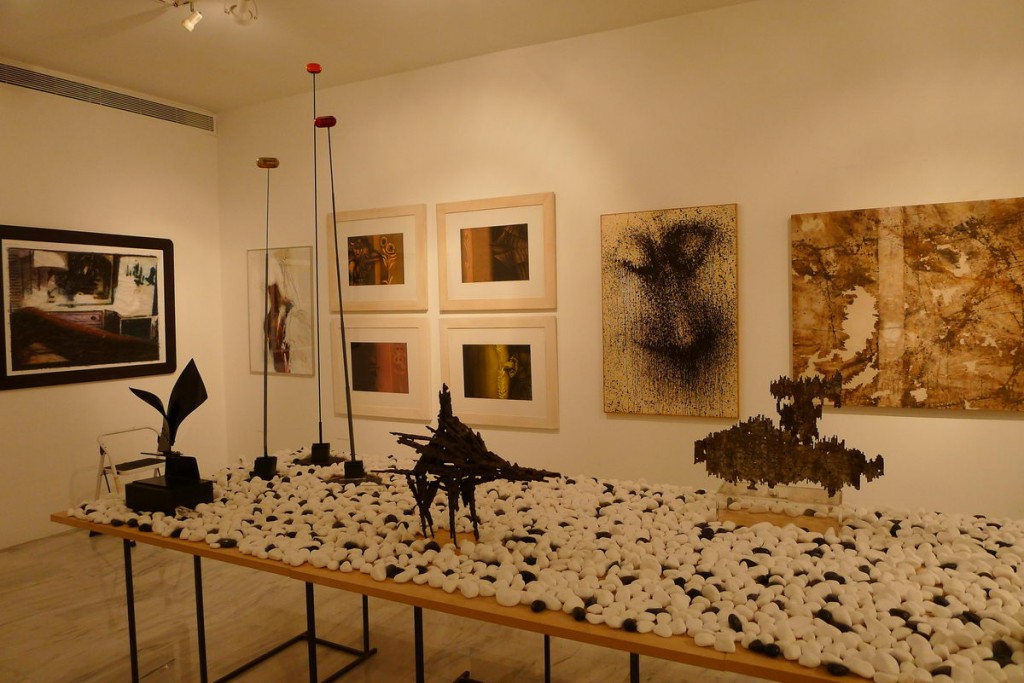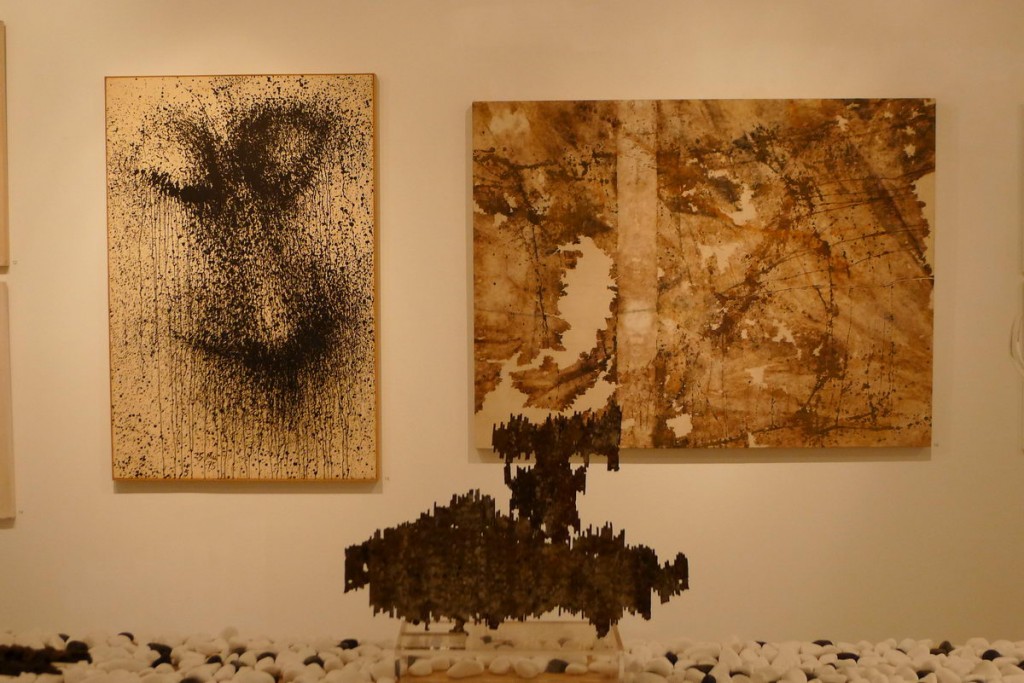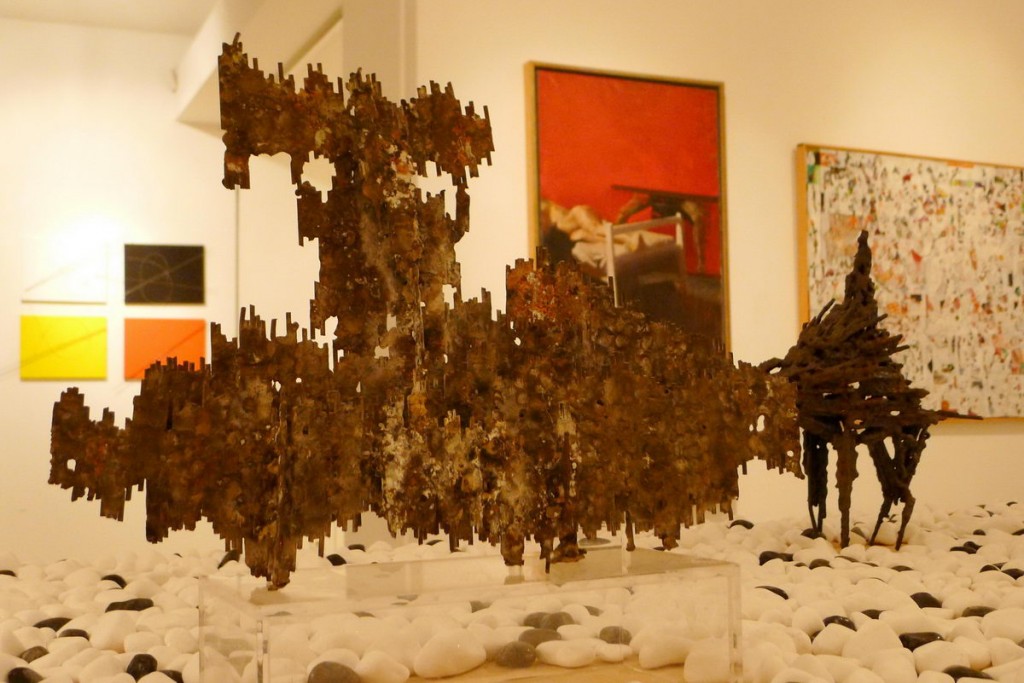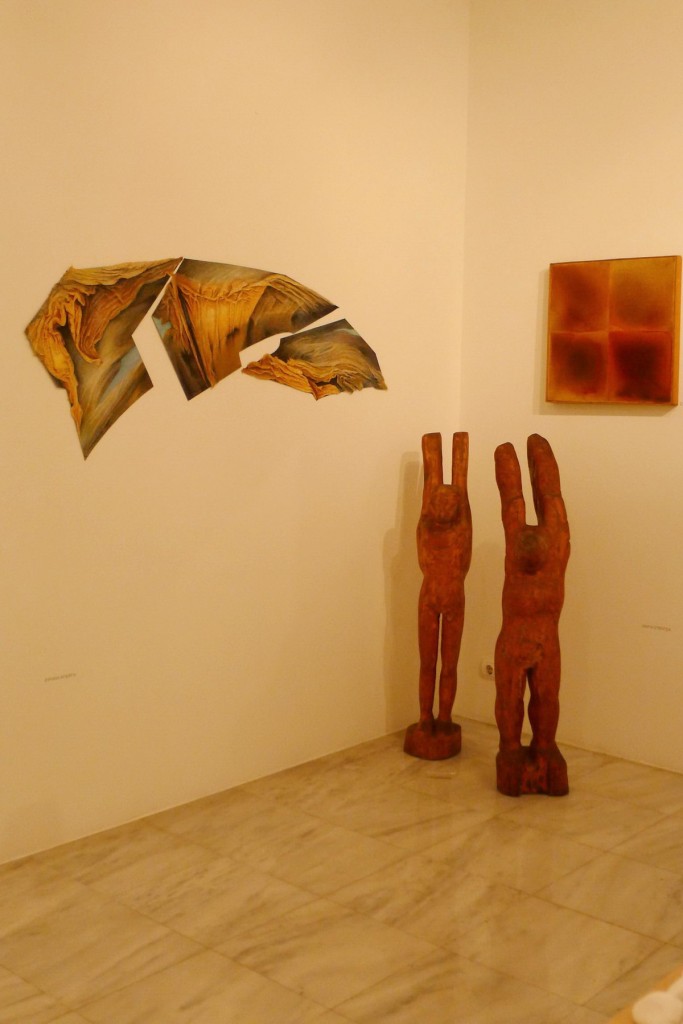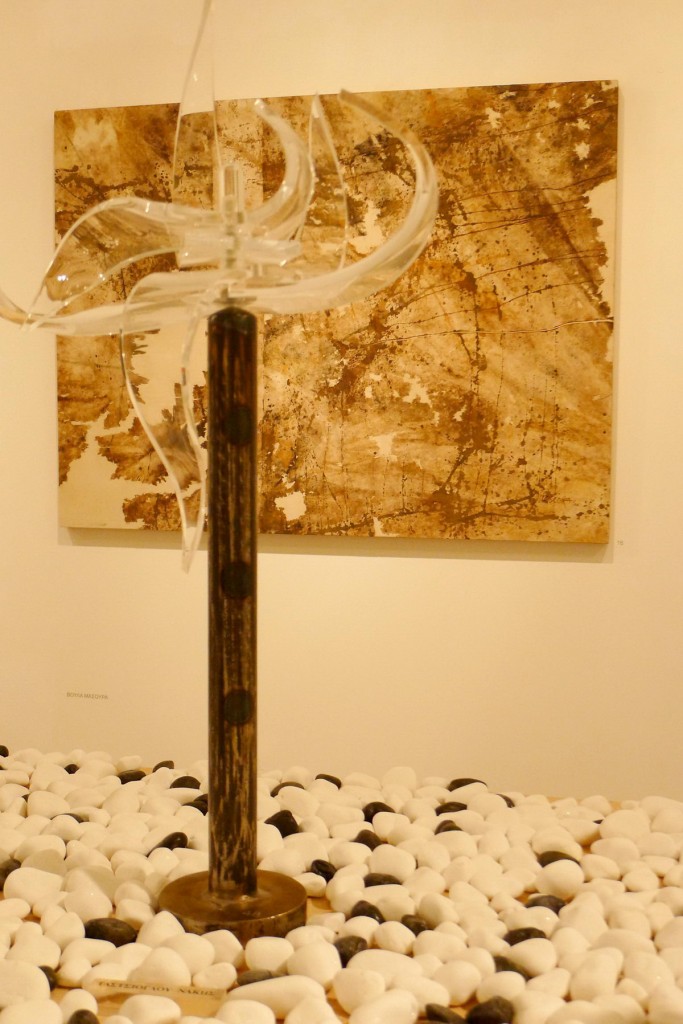BOOK PRESS November 2013
Book Press November 2013
by Tonia Makra
A group exhibition of visual artworks whose excellent presentation does justice to their high artistic value has been organised to celebrate the 35 years of the Medusa Gallery of Maria Demetriades. This anniversary means a lot for the history of Greek galleries; Medusa has always operated on the basis of consistent principles, has hosted most of the enfants gâtées of contemporary Greek art and is essentially one of a handful of art galleries to have followed an unwavering course without ever flirting with commercially-oriented, plush crudities.
On the contrary, it has always maintained a very high standard of quality and aesthetic value. Maria Demetriades, the ‘soul’ of Medusa, never compromises when it comes to selecting associates, for decades going exclusively for artists with a vision and a unique, groundbreaking body of work and thus holding “a stable course through the quicksand of downtown Athens”, in the words of art critic Efi Andreadi, curator of the exhibition. Although all this may sound ideal, it is the truth and is known to all those who, like me, have followed the gallery’s journey over the last two decades. After all, it is such happy exceptions that balance out the trend for facile choices in the art world —mimetism, standardisation, commercialisation— and promote culture.
Maria Demetriades knew what she wanted to do with her life from a very young age. She ascribes her penchant for art to the art-loving environment of her childhood (with her aunt, the painter Maria Spentza, as a major part of it). Before she was twenty she had opened her first gallery —Medusaki, as she calls it— in Pangrati, and soon afterwards she moved it to Kolonaki. One of her first exhibitions was the work of Alexis Akrithakis. So she not only what she wanted to do but also which artists were worth working with. Then came her collaboration with the sculptor Takis, followed by innumerable shows which included major expatriate Greeks such as C. Coulentianos and Mario Prassinos as well as artists of the younger generation with open horizons to new directions, techniques and materials. She never linked the gallery to specific styles or trends; on the contrary, she promoted independent artists who strove to realise their visions guided by authenticity and a quest for their own personal style. Since the late 1970s the gallery remains at the same address on Xenokratous St, which largely preserves its quiet urban atmosphere. Of course, the space has undergone changes from time to time and today, thanks to its distinctive aesthetic, is an art place that is a joy to visit.
It is this venue that hosts the second part of this overview of the gallery’s history, featuring works by the artists G. Zongolopoulos, Tonia Nikolaidi, Takis, Mario Prassinos, Yorgos Gyparakis, Alexis Akrithakis, Maria Grigoriadi (see main illustration), Thanassis Tsingos, Panos Raymondos, Yorgos Lazongas, Costas Ioannidis, Yannis Demetriades, Marianna Strapatsaki, Panayiotis Linardakis, Nakis Tastsioglou, Annita Argyroiliopoulou, Yannis Tzermias, Irene Apergi, Harold Stevenson, Vassiliki Tsekoura, Emilia Papaphilippou, Lina Bebi, Maria Spentza, Maria Dara, Anton, Ioulia Ventikou, Tassos Mantzavinos, Costas Coulentianos, Miltos Michailidis, Voula Massoura.
The test of time
What is particularly interesting about this exhibition is that all artists are distinguished; indeed, some are among the giants of Greek art. More importantly, the works on show have withstood the test of time and proven to be resilient. I liked them all, and find it difficult to distinguish those I admired most. Several exhibits took me back to the time of my first acquaintance with the artists’ work. One painting I adored was by Mario Prassinos, who spent his entire career in France—an exquisite work. I liked a lot the stone compositions of Costas Ioannidis, a body of work I did not know, and the ink drawings of Yannis Dimitrakis—an artist I discovered at this gallery and has remained among my favourites. It was also at Medusa that I got to know the wooden sculptures of Panos Raymondos in an impressive show, as well as the work of Emilia Papaphilippou. I remember as if it were yesterday one of her first installations in the transformed space of the gallery, which was instrumental in establishing its reputation among the art-loving public. I relive also my admiration for the paintings of Tassos Mantzavinos in the beautiful solo exhibition he had presented here. The first show at Medusa of the Paris-based artist Anton was a revelation to me, while his currently exhibited work is one his best creations ever. The ethereal sculpture of Nakis Tastsioglou takes me back to the presentation of his striking compositions of Plexiglas, iron and light as well as to his design of an exceptionally beautiful interior staircase for an office, which we had photographed for a general-interest magazine. Thus with every step, with every work I do my own personal ‘summing up’ of my long relationship with the gallery, the exhibitions it hosted and the artists it introduced as to, the latest example being Miltos Michailidis, son of the distinguished painter Yannis Michailidis, an associate of the historical Nees Morfes gallery.
Personal collection
The works in the exhibition (paintings, sculptures, wall-mounted creations) are among those which Maria Demetriades has been selecting for her personal collection all these years. They are made by artists “of different idiosyncrasies, ideas, inner impulses, concerns and insecurities”, as Efi Andreadi puts it. Some of them are no longer among us (like the sweet Yorgos Zongolopoulos), others no longer collaborate with the gallery, and it would be certainly impossible to find a single common thread among their quests or their style. What seems to connect them is the fact that they are artists known for their work rather than the ‘noise’ around their name; artists whose uniqueness attests to their depth and introspections; who never copied fads but mapped out their own course and evolved without compromise in terms of the quality of their art.
Efi Andreadi explains all this much better:
“Their differences aside, what the artists try in their own way is for the energy which will invest their work with the necessary tension shall not give in to the extreme stimuli of surprise or sensationalism. If sometimes they resort to the omnipotent attraction of the absurd, this is done in a probing manner and with the simplest possible media. Of course, everyone feels the age-old need to produce something unique, but their attitude is one of constant awareness of the true potential of the media and the ways they have chosen to express themselves with. […] the overall sensation from this set of works is that of a clear and harmonious relation or coincidence between the artists’ vision and the world around them”.
Summing up
Retrospective (1979-2013)
14 November 2013 – 18 January 2014
Curator: Efi Andreadi, art critic
Opening hours: Tuesday-Friday 12:00 – 21:00; Saturday 11:00 – 16:00

